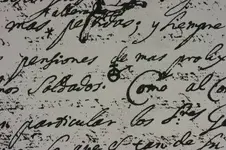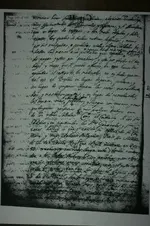Good post Deducer. I do have a comment/question however...
Your first point begs the question that if you aren't putting much faith in printed/scholarly works to give insights on the true history of the Superstitions, then what are you basing your true history on?
To be clear, I'm not saying I disagree with you or am looking for an argument. If nothing else, I have an open mind, but as someone who enjoys research yourself, I'm sure if you were on this side of the keyboard you would be asking similar questions.
Those are excellent questions, and I've spent considerable time thinking about what qualifies as truth in a field that is probably the worst possible field in which to extract an objective truth or what would be considered an academic or at least, agreeable truth. We deal with what at best is revisionist history and at worst, mythology. There was a poster who put up a post, a year or so ago, that captures exactly what we have to deal with- as far as the stories, legends, and whatnot. If only I could find it.
Anyway, to establish a baseline of what would, at minimum, qualify as truth, the old tried and true standards of means, motive, and opportunity certainly applies, as does looking at the big picture as much as looking at the individual tales on their own. It’s basic deduction, hence my username.
Two things that I constantly do is look for patterns and corroborations, especially cross-referencing from different sources or accounts. Certain things that are repeated enough to qualify under the “where there’s plenty of smoke, there must be fire” standard. Especially patterns and corroborating accounts that fit the big picture.
For example, big picture: what were the Spanish doing in the New World? Conquest? Enslavement? Conversion? Or flat out plundering? The overwhelming evidence is that they were engaged in flat out plundering which we know from the sheer size and scope of the Spanish Treasure Fleet, a convoy system adopted by the empire from 1566 to 1790 that ran through Havana (where the two annual fleets would rendezvous prior to the Atlantic voyage) on its way to the Spanish Mainland. Each fleet had about 50 ships, and each galleon was estimated to transport a value cargo of 2 million pesos, and when you add up the ships over the 200 plus years that the fleets operated for, you come up with an astronomical sum. (See: Walton, Timothy R.: The Spanish Treasure Fleets.)
So with this, we establish a baseline truth- the Spanish were here to conquer and plunder, and we apply that as a basic motive behind any legend or story involving the Spanish. From there it’s not too much to also establish means and opportunity.
Likewise with the Jesuits- what were they really doing in the New World? We don’t look at the flowery prose in the reports to the Royalty (which were blatantly tailored to appeal to them) that the “scholars” such as Bolton, Dunn, et al. rely on, almost exclusively for their “sources,” and neither do we rely on the letters penned by the fathers themselves who knew that what they wrote would be scrutinized by every hand these letters passed through. We look at the big picture- the charter, the mission statement of the Jesuit order, the opening lines of the founding document declared that the society was founded for
Whoever desires to serve as a soldier of God beneath the banner of the Cross in our Society, which we desire to be designated by the Name of Jesus, and to serve the Lord alone and the Church, his spouse, under the Roman Pontiff, the Vicar of Christ on earth. Soldiers, not servants, mind you. That’s borderline extremism. They were hardliners. The next sentence starts with: He is a member of a Society..” and only in the last sentence does the mission statement talk about compassion, assisting and serving others. So from that, we know that they were first and foremost “soldiers” and that their first allegiance was to God, then to the Society, to Jesus, and finally, to the church, then to the pope.
That’s the baseline truth, the starting point, from which we can determine ulterior motivation behind what they were really doing in the
Pimeria Alta. Soldiers fight wars, and wars cost money.
I could go on and on about Jesuit motivation in the New World, but you get the basic idea.
The obvious question from the reader is what specifically have you seen, and can you provide examples? I'm sure you've seen many of the photographic "proof" that other posters have shown here of things they've interpreted as treasure signs, rock carvings, etc... that you probably scratch your head at wondering how someone could make that interpretation of something so clearly a work of mother nature.
An example:
For a long time, I never placed much credence in the Doc Thorne legend until I saw one of the landmarks mentioned in the story, that of the rock outcropping that resembled the erect "member" of a stallion. It was very unmistakable. (This story is recounted in Thomas Glover’s book
Treasure Tales of the Superstitions)
But more importantly it was in the right place- in the proximity of the entrance to the canyon where the two soldiers got lost. That makes me think that the Doc Thorne picked up his gold in close proximity to the LDM if not from it, itself, before the Apache buried it for good.




 .
.


